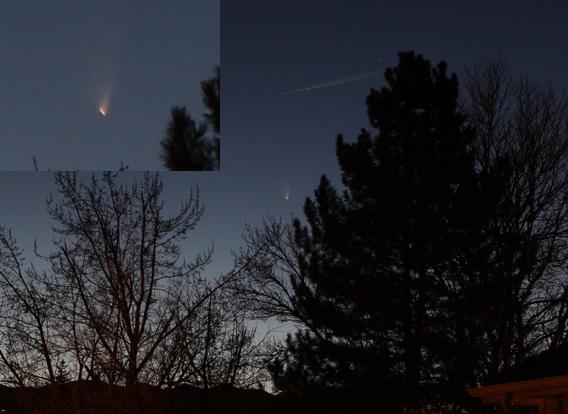I know, I know, but c’mon? How can I not post more amazing footage and picture of Pan-STARRS, a comet so bright you can spot it naked eye?
It’s getting to the point now where I see so many pictures that it takes something pretty special to want to share it…so how about freaking THIS?

Image credit: Tommy Eliassen
Seriously. That was taken by Tommy Eliassen on Mar. 19 in Meløy, Nordland, Norway. I love how the tail of the comet coincidentally is almost exactly perpendicular to the sweeping arc of the aurora. There’s a connection between the comet and the aurora, though it’s indirect and tenuous. Literally.
Subatomic particles are blown away from the Sun in the solar wind. They hit the comet and in part create the tail sweeping back from the main head of the comet. But the solar wind also blows to Earth, where the particles are netted by our planet’s magnetic field and channeled down toward the ground. They slam into the air, causing it to glow. The green you see here is from excited atomic oxygen 100 km or so over the Earth’s surface, shaking off the extra energy they received from those fast-moving solar electrons. Together, the comet and the aurora make for an eerie, silent, and beautiful sight.
Closer to home—my home, at least—Boulder photographer Patrick Cullis took a fantastic time-lapse video of the comet setting over my home town’s iconic Flatirons:
The Flatirons are sedimentary sandstone pushed up 30-80 million years ago as the Rocky Mountains poked through the Earth’s crust, just to add a little deep-timey geological thrill to this. Around the 37-second mark in the video you can see lights on them as climbers make their way around the rocks. It’s common to see people free-climbing the Flatirons hundreds of meters above the ground; that is, using no equipment except their hands and feet. It’s terrifying, but amazing.
Finally, because I want to make a point: I was out the other night to see the comet and took some pictures myself. I’m actually rather pleased with how this one came out:

Image credit: Phil Plait
I just got a Canon Rebel T4i with an 18-135mm lens, and this is my first outing with it. I used to shoot with an SLR all the time in high school, but it’s been a while, so I’m relearning everything. Focusing was a problem, but I think I’m getting the hang of it. This shot was a 10-second exposure at f/5.6 and at 135mm (with the camera set to automatically take a low-light calibration frame, which I’d love to lecture you about because it’s awesome but that will wait for another day). The long streak is an airplane heading southwest.
The comet was easily visible in binoculars, and I could just see it with my naked eye low to the horizon just after sunset, a bit north of west. My point is that it’s not hard to see; it’s just that you have to be ready as soon as the sky is dark. And it doesn’t take fancy equipment to get pictures of it; an inexpensive point-and-shoot camera will do it as long as you have a tripod or some other way of keeping it steady.
This is a fantastic chance to take some amazing astronomical pictures of an object we won’t ever see again after this pass. We’ll be getting more bright comets—including one this winter!—but Pan-STARRS will never come this way again. If you can, I truly hope you take the chance to take a look.